-
From 18 to 20 May
Workshop conducted by Mattin
Free registration, open until 13 May
Please send your CV and a cover letter to artesenvivo2@museoreinasofia.es
List of accepted aplicants
Intended for people interested in contemporary art, performance and sound practices, the workshop sets out from the historical resonance of the Sala de Bóvedas, located in the basement of the Museo, which underscores the qualities of voice in relation to insanity.
Mattin’s sound, performance and theoretical production focuses on different political aspects of noise and improvisation, his work encompasses noise records and concepts and deals of identity on the voice, as well as collaborations with other improvisation artists and groups like Sakada, La Grieta and Billy Bao. In many of his projects the idea of musical performance is destroyed or social and hierarchical organisation becomes apparent. -
20 May, 2015 Sabatini Building, Sala de Bóvedas. Floor -1
Mattin, in collaboration with Maite Barreras, Susana Carmona, Rubén Coll, Fátima Cue, Julie Mathieu, Julián Mayorga, Jorge Ocasio Colón and Marta Sainz. Collective Performance for Voices and Vaults
This collective intervention looks to appropriate the subjectivities and temporalities that comprise the historical resonance of the Sabatini Building. Devised in the workshop calling for proposals and performed by the same participants, it will take place in the Sala de Bóvedas, one of the oldest spaces in the building which, until the closure of the General Hospital in 1963, housed hydrotherapy facilities and rooms for patients with dementia.
-
27 May, 2015 Sabatini Building, east and west stairs
Jean-Luc Guionnet y Artur Vidal. Two Simultaneous Concerts for Two Staircases. Babbling and Glossolalias
The concert featuring these two saxophonists is held simultaneously in two symmetrical staircases, separated by some two hundred metres – despite the fact that nowadays they are cut off, in the past they were an essential part of the building in its years as a hospital. The intervention stems from the interaction of the wind instrument with the granite, enormous staircase and the setting it occurs in.
This is the first time both world-renowned saxophonists have worked together, although they will be performing in different places and hearing them at the same time will be impossible. The simultaneity of the intervention looks to break away from the duo structure in which the performers communicate by seeing and listening to one another, and looks to rethink the arrangement of a standard programme, where one musician follows the other in time.
Both musicians have worked with the potential of the instrument and the circumstances that arise in live performance. Artur Vidal’s work interacts with the specific site and the space it circulates around, while the music of Jean-Luc Guionnet relates external elements and the instrument used to a question or theoretical principle, for instance what is rumour.
-
3 June, 2015 Sabatini Building. Garden and Protocol Room
Alex Mendizabal. Concert for a Patio, a Room, ½ a Litre of Liquid Soap, Water, 248 Balloons, Taps and Etceteras
This concert uses 248 balloons as a wind instrument, which, together with soap and water, explore two very different acoustic spaces: on one side, the space in the bay of the vaults and the different woods in the Protocol Room, originally conceived as a kitchen before becoming a space for linens in the 19th century, the Protocol Room in 1986 and a gallery for temporary exhibitions in the present day, where the sound is warmer and more contemplative. And on the other, the garden’s open space, the only one remaining of the five designed by the hospital in the 18th century, where the balloons weave a fusion of changing tones to circulate around.
Over the last 30 years, Alex Mendizabal has intervened in different musical and sound environments, setting out from more traditional compositional arrangements such as sheet music and magnetic tape to include playful and heterodox forms. He has participated in the Ertz festival (Bera).
-
10 June, 2015 Sabatini Building, Room 210
Rhodri Davies. Eliane Radigue: Occam I
Occam I was formulated by composer Eliane Radigue for Rhodri Davies in 2011. The piece is based on the electromagnetic and audible spectrum, the relationship of the body to waves and, of course, the William of Ockham principle, according to which the simplest idea will probably be the correct one. Room 102 was designed as a nursing space and currently houses Richard Serra’s piece Equal-Parallel: Guernica-Bengasi (1986), a sculpture with a strong historical content which formally enters into dialogue with the space and the body of the viewer.
.
Eliane Radigue, a renowned French composer, has worked with the modular synthesiser since the 1960s, developing diverse electronic pieces. More recently she has composed works for acoustic instruments.
Rhodri Davies, a free improvisation artist, is characterised by his use of rare sounds and timbres, in addition to barely changing, low and near silent volumes. He frequently works with the saxophonist John Butcher and the composer Philip Corner, among others.
-
17 June, 2015 Sabatini Building, Room 210
Itziar Okariz. Performance for Palms and Rooms
Itziar Okariz normally uses amplification and delay as expressive mediums to join the voice and body. On this occasion she works with space and audience through the use of applause, a sign of acceptance often shown in performing arts. This gesture and sound is tightly codified and controlled; rarely is it spontaneous and its timings and intensities have a specific meaning in auditoriums and theatres. Yet applause can also be over signified, for instance when it starts to conclude a performance that no longer holds any interest, or when it is given slowly as a sign of derision. In the context of this intervention it is over exposed and conditioned by response and place.
The work of Itziar Okariz is characterised by actions produced that question norms surrounding language and the production of signs that define us as subjects. In her work, repetition and the decontextualisation of gestures and actions take on particular importance.
-
24 June, 2015 Sabatini Building, Garden
Alberto Bernal (with Neopercusión). Mobile. Work for a Percussion and a Performer
Mobile has been specifically composed for this space and programme and aims to explore the main garden in the Sabatini Building through four moving percussionists. For this purpose, the group of performers will traverse the corridors, turning the garden into another instrument. The piece analyses the sonorous possibilities of percussion and its relationship with the architecture, sculptures, vegetation, earth and water concentrated in the same garden. This spatial score makes use of four outer and four inner corners that form the corner points of Alexander Calder’s monumental sculpture Carmen, which has stood in the garden since 1992.
Alberto Bernal is a composer and sound artist with a classical background and eclectic influences who puts together pieces in the crossroads between music and visual arts. His work involves the search for limits: between aesthetics and socio-politics and between traditional spheres of perception – sound, images, words and daily perceptions.
Resonance. Concerts for Another Listening
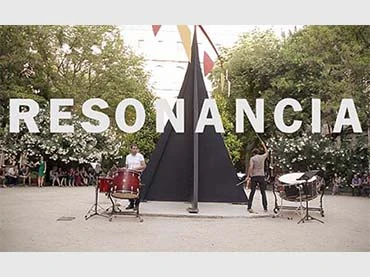
Alberto Bernal (with Neopercusión). Mobile. Work for a Percussion and a Performer
Held on 20, 27 May, 03, 10, 17, 24 Jun 2015
Resonance is a series of sound interventions for a specific site, activating the acoustic and historical space in the Museo Reina Sofía’s Sabatini Building. The programme refrains from using the auditorium and electronic amplification, which means guest artists, musicians and composers will present a series of pieces that set in motion alternative contexts for sound and contemporary music.
This series lays out a set of interventions that work with unwanted echoes and resonances, developing the properties sound possesses, depending on where it is produced – a quality that the careful design of auditoriums, speakers and earphones have tried to make us forget.
Modern music in Europe changes with the buildings that houses it. There is a type of opera for a type of opera house, while the waltz in large-scale rooms does not possess the same musical form as swing music in dance halls. Buildings designed for listening such as auditoriums – which are becoming increasingly more specialised – direct attention frontally or define space shared by the musician and listener. The introduction and popularisation of the record player, electronic amplifiers and radio have established new ways of listening based on reproduction, where the musician and listener become more and more distanced and where there is no control over who accesses the symbolic space of the music.
This series puts forward other paradigms of listening, introducing six sound interventions as possible alternatives to the traditional history of modern resonance. Where are we when we listen? When we listen are we in another world or inside the music? writes Veit Earlman. Listening is to live in the sound, and the pieces for these other modes of listening in the Sabatini Building include, among others: a collective performance for voices and vaults by Mattin, a wind concert without blowing for garden and rooms by Alex Mendizabal and a duo for two saxophones and two staircases by Jean Luc Guionnet and Artur Vidal.
Curatorship
José Luis Espejo

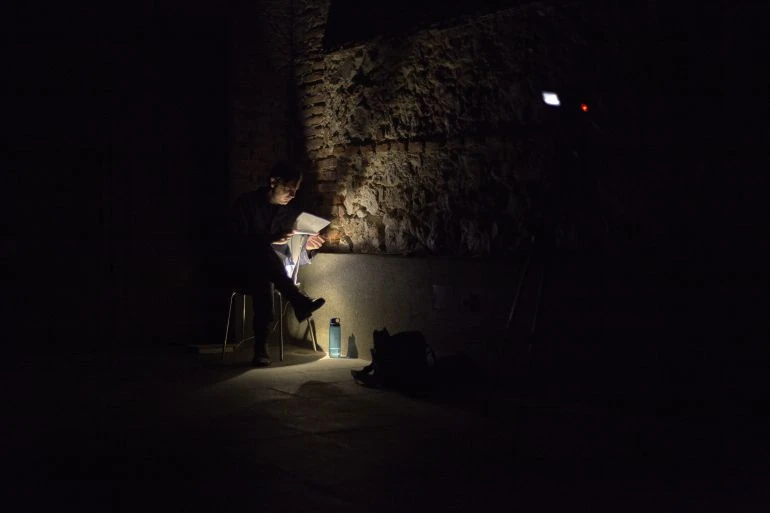
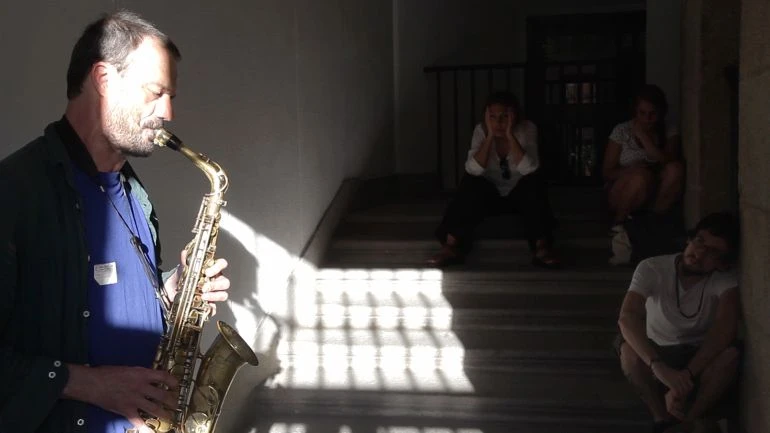
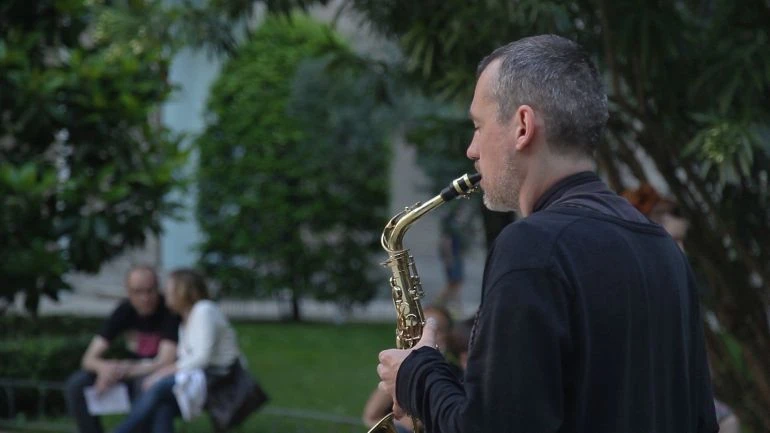
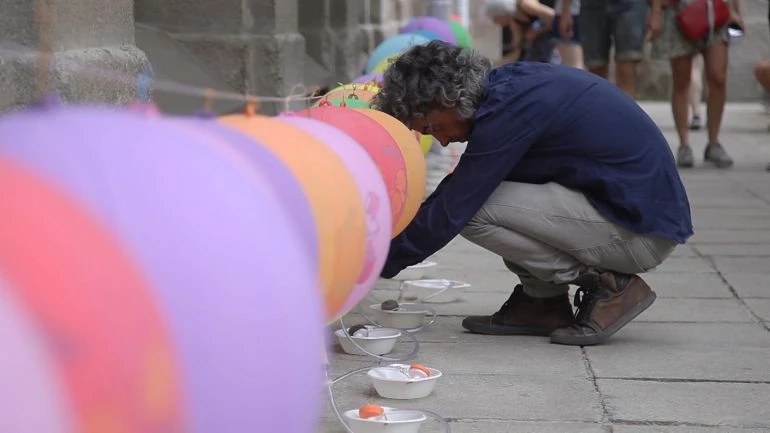
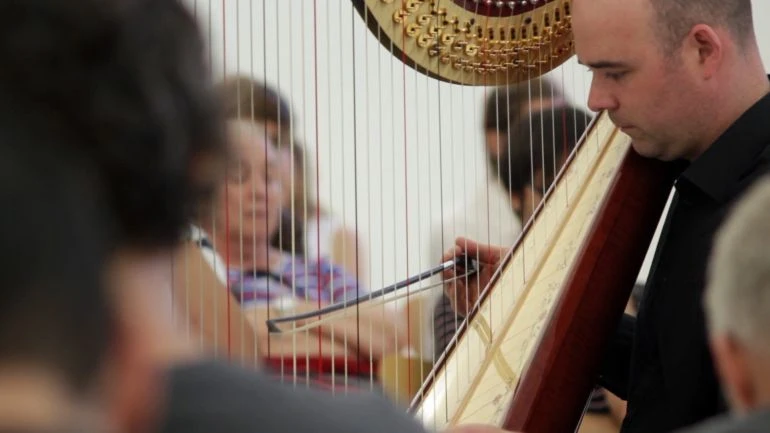
Más actividades

Difficulty. Forms and Political Effects of Deviation in Writing and Contemporary Art
23 February – 14 December 2026 – Check programme
Difficulty. Forms and Political Effects of Deviation in Writing and Contemporary Art is a study group aligned towards thinking about how certain contemporary artistic and cultural practices resist the referentiality that dominates the logics of production and the consumption of present-day art. At the centre of this proposal are the concepts of difficulty and deviation, under which it brings together any procedure capable of preventing artistic forms from being absorbed by a meaning that appears previous to and independent from its expression. By ensuring the perceptibility of their languages, difficulty invites us to think of meaning as the effect of a signifying tension; that is, as a productive and creative activity which, from the materiality of art objects, frees aesthetic experience from the representational mandate and those who participate in it from the passiveness associated with tasks of mimesis and decoding.
The economy of the referential norm translates the social logic of capitalism, where insidious forms of capturing subjectivity and meaning operate. In the early 1980s, and adopting a Marxist framework, poet Ron Silliman highlighted how this logic entailed separating language from any mark, gesture, script, form or syntax that might link it to the conditions of its production, rendering it fetichised (as if without a subject) and alienating its users in a use for which they are not responsible. This double dispossession encodes the political strategy of referential objectivity: with no subject and no trace of its own consistency, language is merely an object, that reality in which it disappears.
The political uses of referentiality, more sophisticated today than ever before, sustain the neoliberal-extractivist phase of capitalism that crosses through present-day societies politically, economically and aesthetically. Against them, fugitive artistic practices emerge which, drawing from Black and Queer studies and other subaltern critical positions, reject the objective limits of what exists, invent forms to name what lies outside what has already been named, and return to subjects the capacity to participate in processes of emission and interpretation.
Read from the standpoint of artistic work, the objective capture of referentiality may be called transparency. Viewed from a social contract that reproduces inequality in fixed identity positions, transparent in this objectivity are, precisely, the discourses that maintain the status quo of domination. Opposite the inferno of these discourses, this group aims to collectively explore, through deviant or fugitive works, the paradise of language that Monique Wittig encountered in the estranged practices of literature. For the political potency of difficulty — that is, its contribution to the utopia of a free language among equals — depends on making visible, first, its own deviations; from there, the norm that those deviations transgress; and finally, the narrowness of a norm which in no way exhausts the possibilities ofsaying, signifying, referring and producing a world.
From this denouncement of referential alienation, fetishisation and capture, Difficulty. Forms and Political Effects of Deviation in Writing and Contemporary Art turns its attention to the strategies of resistance deployed by contemporary artists and poets. Its interest is directed towards proposals as evidently difficult or evasive as those of Gertrude Stein, Lyn Hejinian, Theresa Hak Kyung Cha, Kameelah Janan Rasheed, Kathy Acker, María Salgado and Ricardo Carreira, and as seemingly simple as those of Fernanda Laguna, Felix Gonzalez Torres and Cecilia Vicuña, among other examples that can be added according to the desires and dynamics of the group.
The ten study group sessions, held between February and December, combine theoretical seminars, work with artworks from the Museo Reina Sofía’s Collections and exhibitions, reading workshops and public programs. All these formats serve as spaces of encounter to think commonly about certain problems of poetics — that is, certain political questions — of contemporary writing and art.
Difficulty. Forms and Political Effects of Deviation in Writing and Contemporary Art inaugurates the research line Goodbye, Representation, through which the Museo Reina Sofía’s Studies Directorship seeks to explore the emergence of contemporary artistic and cultural practices which move away from representation as a dominant aesthetic-political strategy and redirect their attention toward artistic languages that question the tendency to point, name and fix, advocating instead for fugitive aesthetics. Over its three-year duration, this research line materializes in study groups, seminars, screenings and other forms of public programming.

CLINIC 2628. A Community of Writing and Research in the Arts
February – October 2026
Clinic 2628 is a project which supports and brings together writings which stem from the intention to offer a space and sustainable time for research work in art and culture. Framed within an academic context which is increasingly less receptive to the forms in which thinking happens and is expressed, the aim is to rescue the academic from its neoliberal trappings and thus recover the alliance between precision and intuition, work and desire. A further goal is to return writing to a commons which makes this possible through the monitoring of processes and the collectivisation of ideas, stances, references and strategies.
The endeavour, rooted in a collaboration between the Museo Reina Sofía’s Studies Directorship and the Artea research group, via the i+D Experimenta project, is shaped by three annual editions conceived as spaces of experimentation, discussion and a demonstration of writings critical of what is put forward by today’s academia.
What forces, forms and processes are at play when writing about art and aesthetics? In academia, in museums and in other cultural institutions, the practice of writing is traversed by productivist logics which jeopardise rhythms of research and experimentation. The imposition of both scientism inherent in the structure of “the paper” and the quantifying of results which demand a criterion of quality and visibility sterilise and smoothen, from the outset, the coarseness that is particular to writing understood from the concrete part of language: phonic, graphic, syntactic and grammatical resistance connecting the language user to the community the language unites and activates. They also sterilise the roughness enmeshed in the same desire to write, the intuitive, clear and confusing pathways that once again connect the writer to those reading and writing, participating in a common good that is at once discovered and produced.
The progressive commercialisation of knowledge propelled by cognitive capitalism moves further away from the research and production of knowledge in artworks and artistic languages and practices. The work of curators and archive, criticism, performances and essays formerly saw a horizon of formal and emotional possibilities, of imagination that was much broader when not developed in circumstances of competition, indexing and impact. Today, would it be possible to regain, critically not nostalgically, these ways; namely, recovering by forms, and by written forms, the proximity between art thinking and its objects? How to write in another way, to another rhythm, with no more demands than those with which an artwork moves towards different ways of seeing, reading and being in the world?
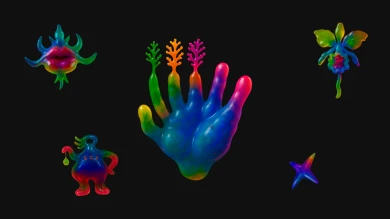
Cultural Work
Thursday, 12 February 2026 – 5:30pm
This series is organised by equipoMotor, a group of teenagers, young people and older people who have participated in the Museo Reina Sofía’s previous community education projects, and is structured around four themed blocks that pivot on the monstrous.
Session number two looks to approach film as a place from which cultural work is made visible and processes of production engage in dialogue with artistic creation. From this premise, the session focuses on exploring how audiovisual content is produced, assembled and distributed, from the hands that handle the images to the bodies that participate in its circulation. The aim is to reflect on the invisible effort, precarity and forms of collaboration that uphold cultural life, that transform the filmic experience into an act that recognises and cares for common work.
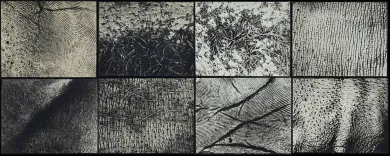
The (legal) person and the legal form. Chapter II
8, 12, 15 January, 2026 – 16:00 to 19:00
As part of the Studies Constellation, the Study Directoship’s annual fellowship, art historian and theorist Sven Lütticken leads the seminar The (Legal) Person and the Legal Form: Theoretical, Artistic, and Activist Commitments to foster dialogue and deepen the hypotheses and questions driving his research project.
This project, titled Unacting Personhood, Deforming Legal Abstraction, explores the dominance of real abstractions—such as exchange value and legal form—over our processes of subjectivation, and asks how artistic practices can open up alternative ways of representing or performing the subject and their legal condition in the contemporary world.
The seminar consists of eight sessions, divided into three chapters throughout the academic year. While conceived as non-public spaces for discussion and collective work, these sessions complement, nourish, and amplify the public program of the Studies Constellation.
In this second chapter of the seminar, the inquiry into the aesthetics and politics of legal form continues with three sessions that pick up the discussions held in Chapter I but propose new lines of flight. The first session focuses on international law via the writings of the British author China Miéville, which allows us to reconsider the notion of the legal form –following Evgeny Pashukanis— and, through it, a variety of (people’s) tribunals. While the crucial concept of the legal person –as the right-holder central to the form of law— was debated in Chapter I, the second session focuses on attempts to extend personhood not (just) to corporations, but rather to nonhuman animals or ecosystems. Finally, the third session poses the question: how can groups and networks use officially recognized organizational forms (such as the foundation or the cooperative) and/or use a collective persona (without necessarily a legal “infrastructure” to match) to act and represent themselves?

TEJA 2026. Open Call for Emergency Art Residencies
Proposal submission until 12 January, 2026
TEJA / Red de espacios culturales en apoyo a situaciones de emergencia [Network of Cultural Spaces in Support of Emergency Situations] has the mission to promote transnational cooperation by offering temporary art residencies to artists and cultural practitioners who find themselves in complex socio-political situations in their countries of origin. During their stay in Spain, residents receive accommodation, legal and psychological counseling, and access to a network of organizations and professionals with whom they can share, develop, and continue with their creative projects. The goal is to provide a safe and stimulating environment where artists can continue their work despite adverse circumstances and generate dialogue spaces that ensure freedom of expression through joint activities both in Spain and with international collaborators.
During 2026, TEJA hosts three new residencies, each lasting three months, dedicated to supporting artists and cultural practitioners residing in the West Bank and Jerusalem. In addition, in the second half of the year, TEJA hosts three additional residencies for Gazan artists, which are offered by invitation (as Spain is currently unable to facilitate evacuations from Gaza, these invitations are coordinated through France). These residencies aim to provide a stable, creative environment and foster artistic exchange in the face of ongoing adversities. Through this new program, TEJA reaffirms its commitment to amplifying Palestinian voices and empowering artists as they navigate these turbulent times.
The selection is carried out by the TEJA network in close collaboration with each hosting partner. This year the hosting partners are: La Escocesa (Barcelona), hablarenarte / Planta Alta (Madrid), Espositivo (Madrid), Institute for Postnatural Studies (Madrid), Casa Árabe (Córdoba). The selection prioritizes the artist’s personal and professional situation first, and then the alignment with the practices and themes of the hosting spaces. Proposal submission deadline is January 12th, 2026, 23:59 h.
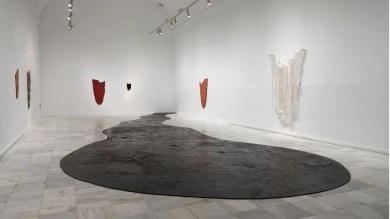
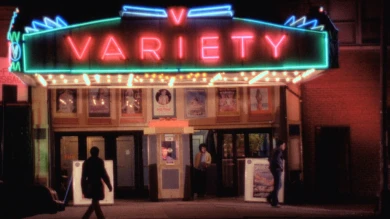
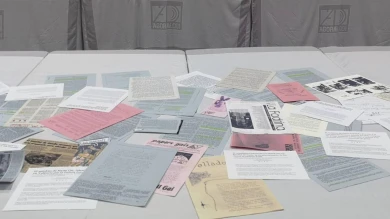
![Miguel Brieva, ilustración de la novela infantil Manuela y los Cakirukos (Reservoir Books, 2022) [izquierda] y Cibeles no conduzcas, 2023 [derecha]. Cortesía del artista](https://recursos.museoreinasofia.es/styles/small_landscape/public/Actividades/ecologias_del_deseo_utopico.jpg.webp)
![Ángel Alonso, Charbon [Carbón], 1964. Museo Reina Sofía](https://recursos.museoreinasofia.es/styles/small_landscape/public/Actividades/perspectivas_ecoambientales.jpg.webp)